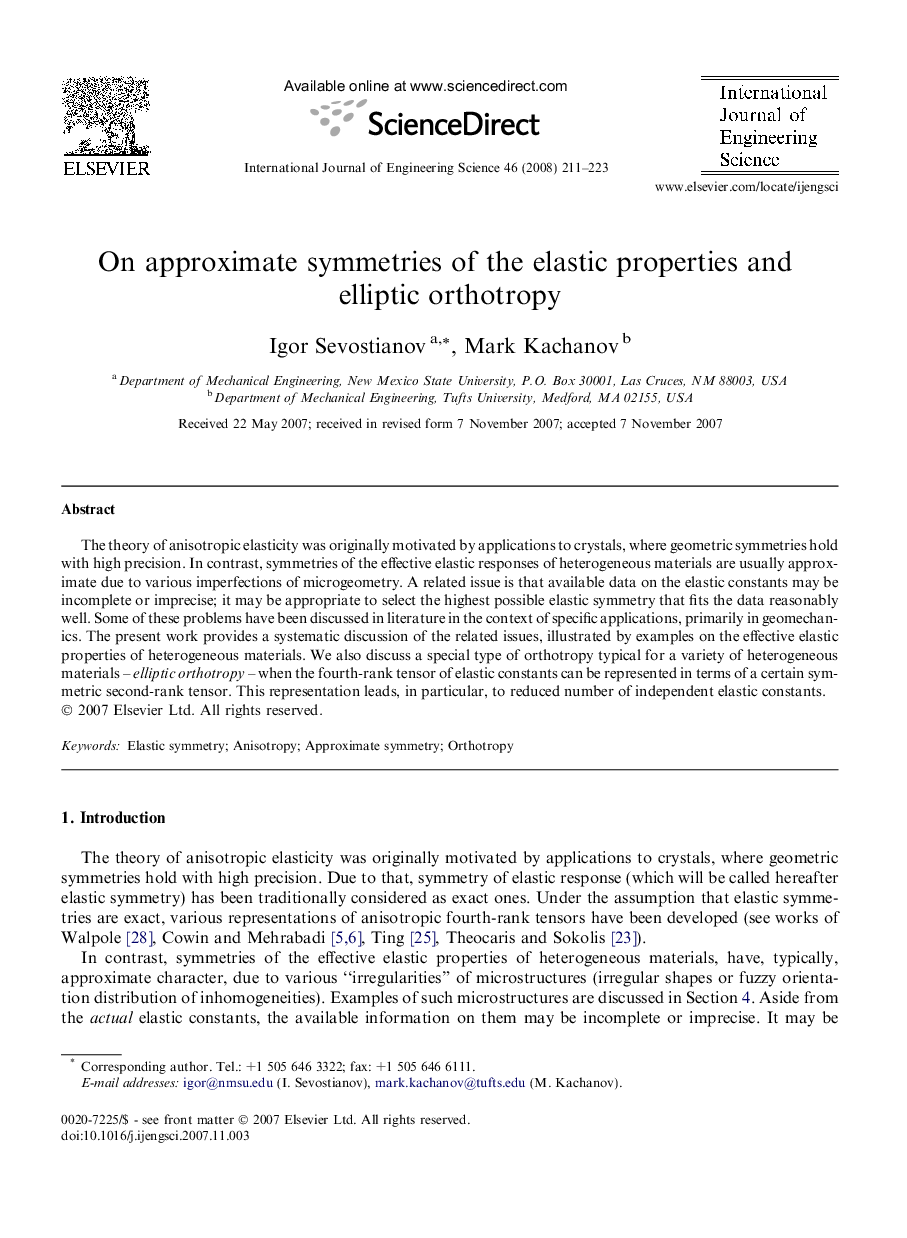| Article ID | Journal | Published Year | Pages | File Type |
|---|---|---|---|---|
| 825661 | International Journal of Engineering Science | 2008 | 13 Pages |
The theory of anisotropic elasticity was originally motivated by applications to crystals, where geometric symmetries hold with high precision. In contrast, symmetries of the effective elastic responses of heterogeneous materials are usually approximate due to various imperfections of microgeometry. A related issue is that available data on the elastic constants may be incomplete or imprecise; it may be appropriate to select the highest possible elastic symmetry that fits the data reasonably well. Some of these problems have been discussed in literature in the context of specific applications, primarily in geomechanics. The present work provides a systematic discussion of the related issues, illustrated by examples on the effective elastic properties of heterogeneous materials. We also discuss a special type of orthotropy typical for a variety of heterogeneous materials – elliptic orthotropy – when the fourth-rank tensor of elastic constants can be represented in terms of a certain symmetric second-rank tensor. This representation leads, in particular, to reduced number of independent elastic constants.
